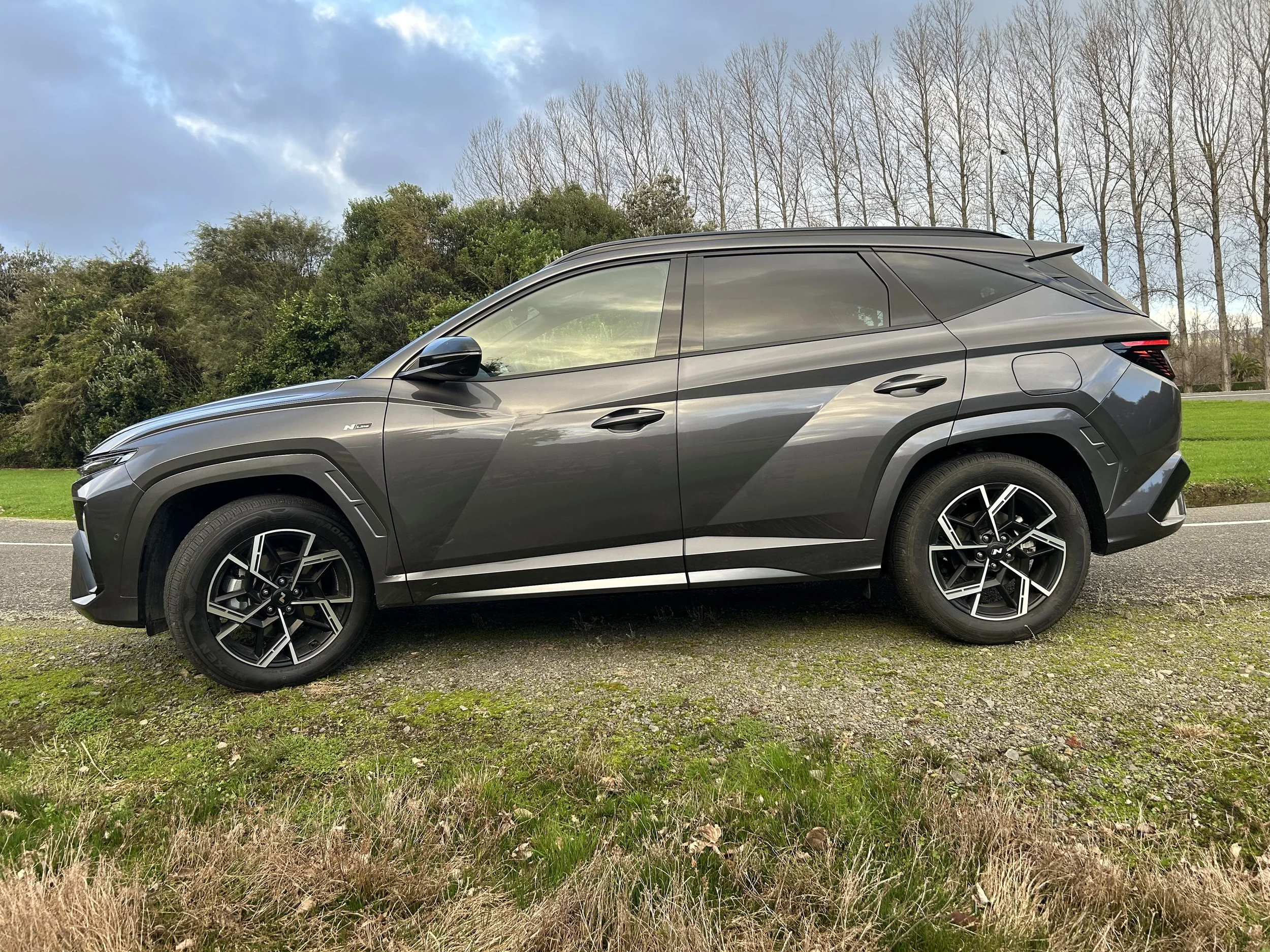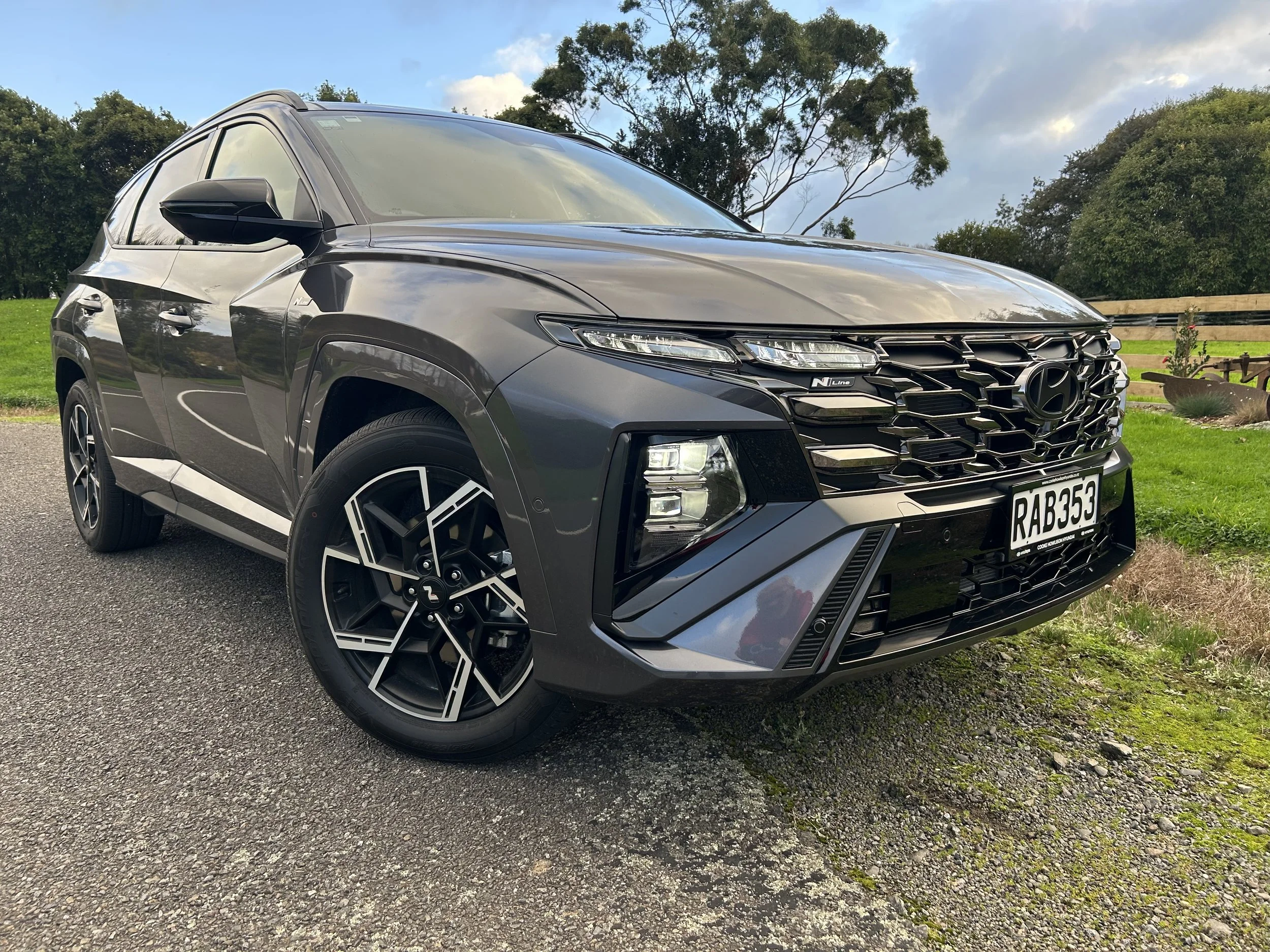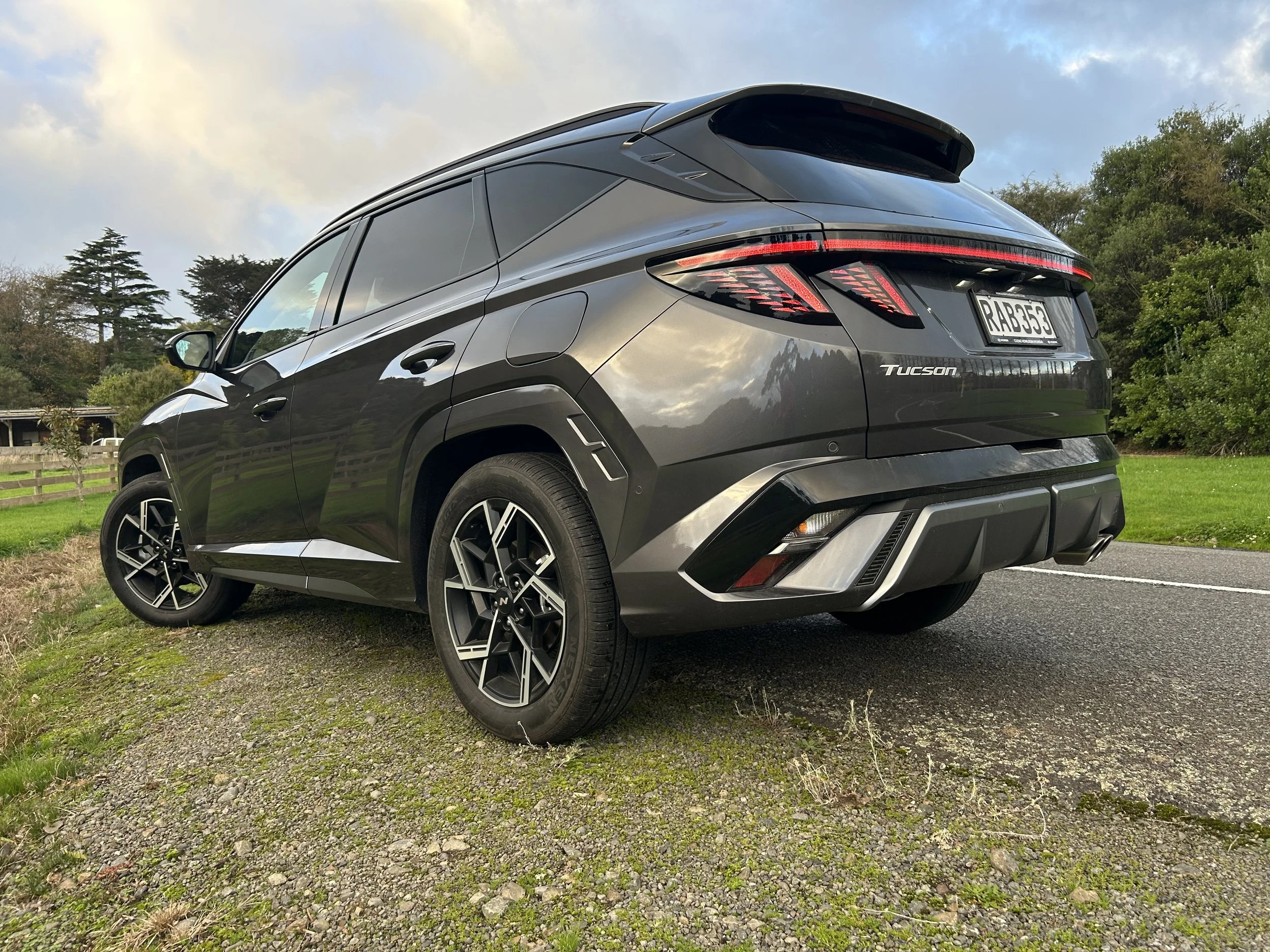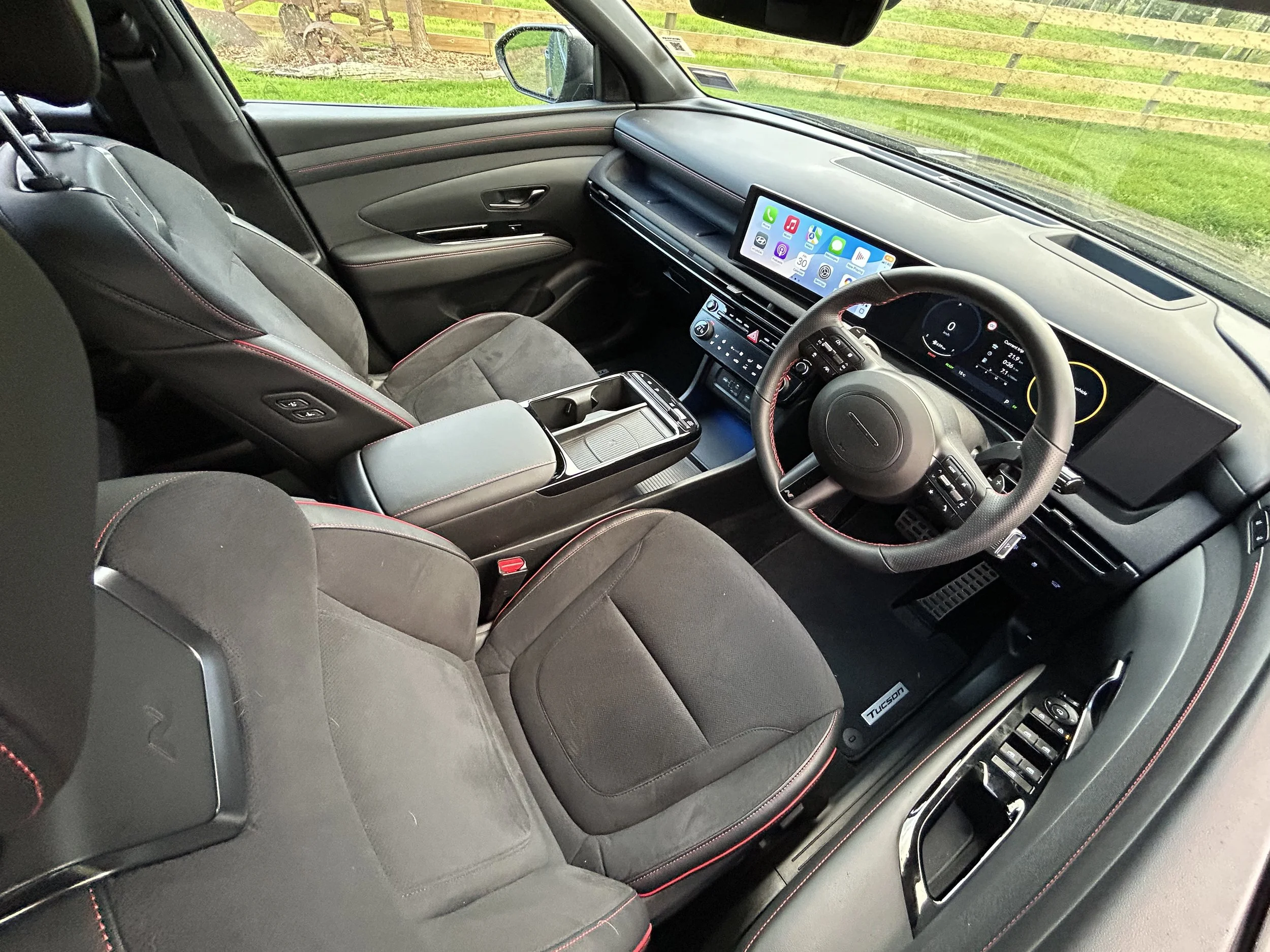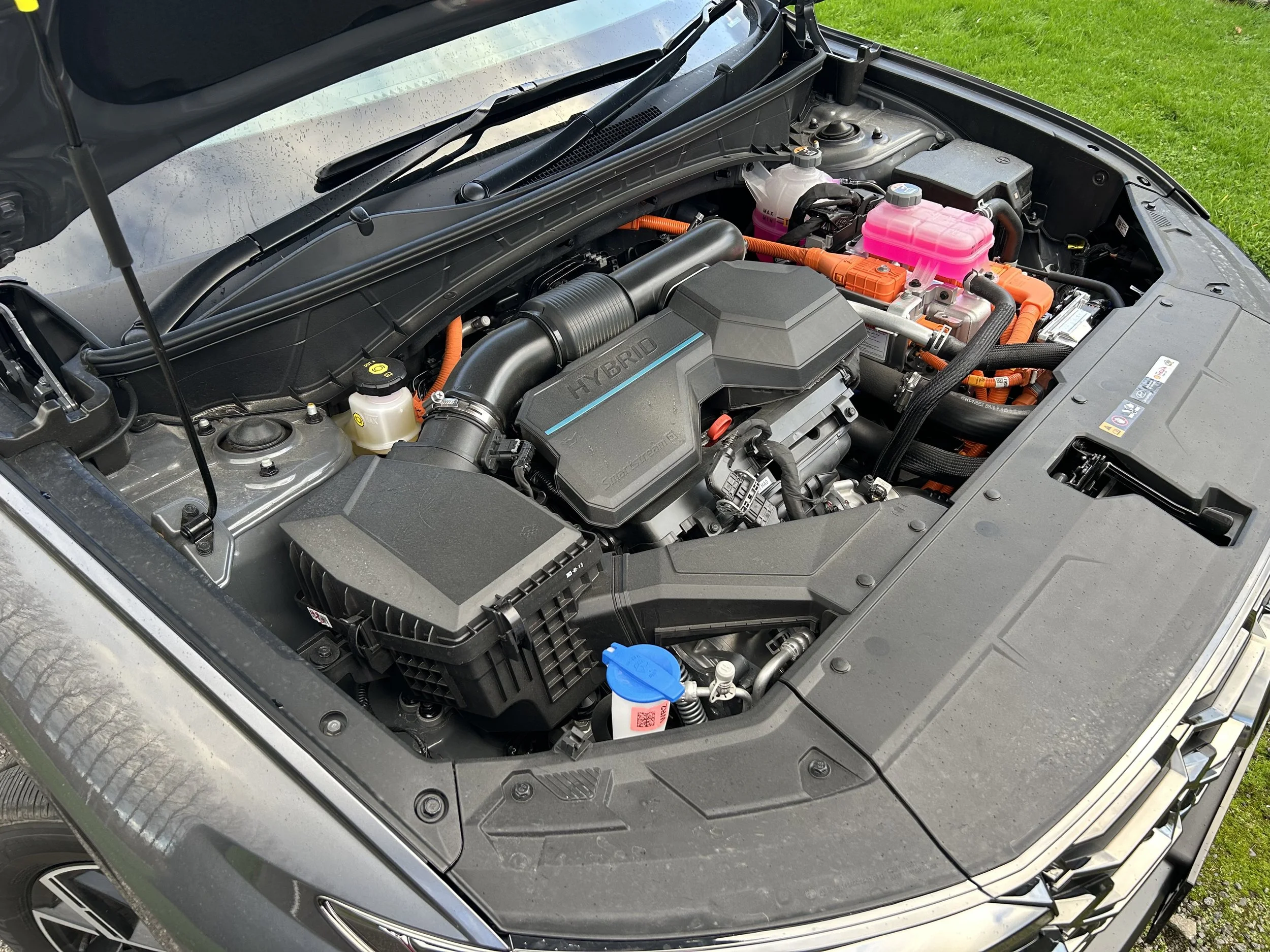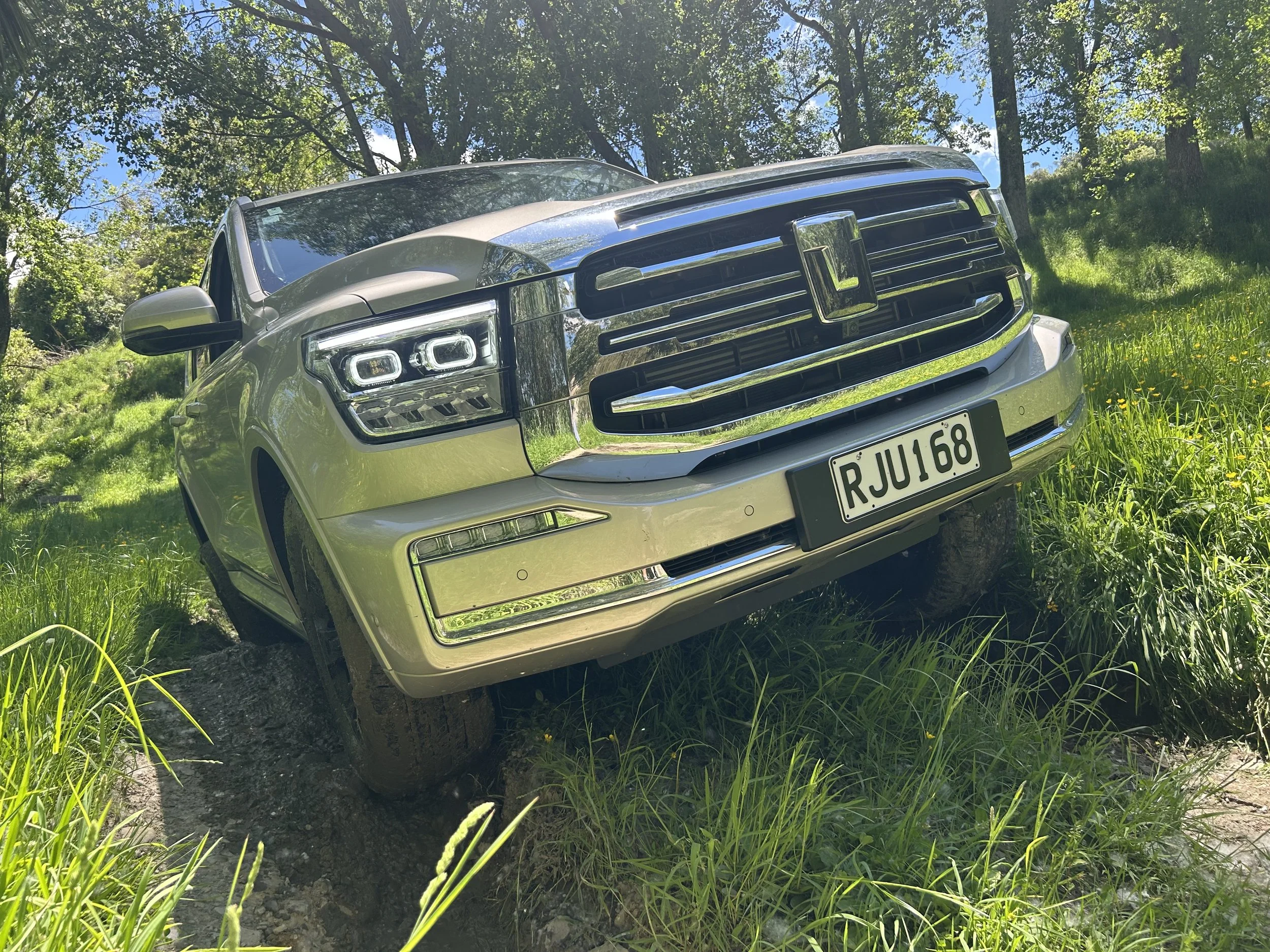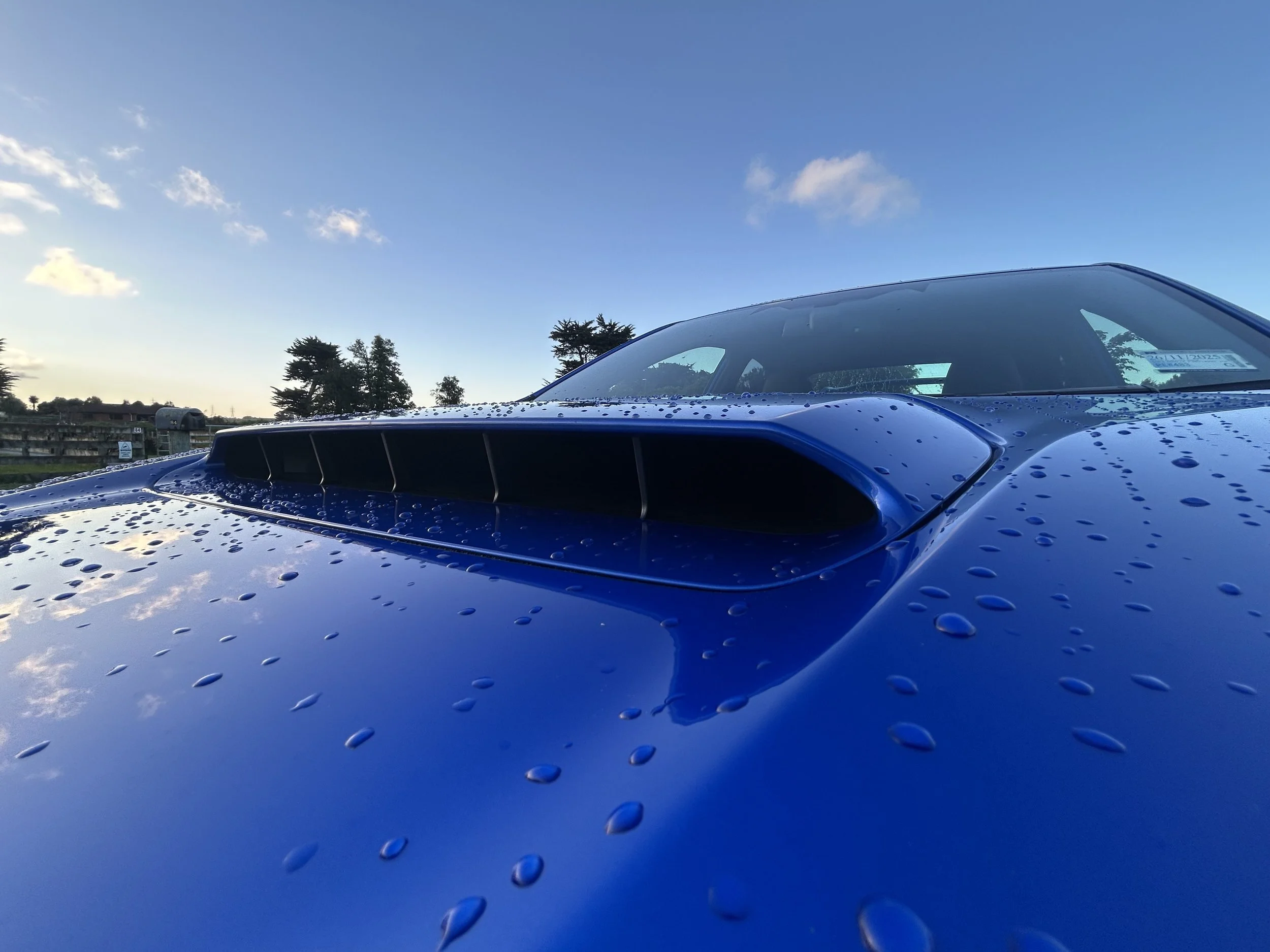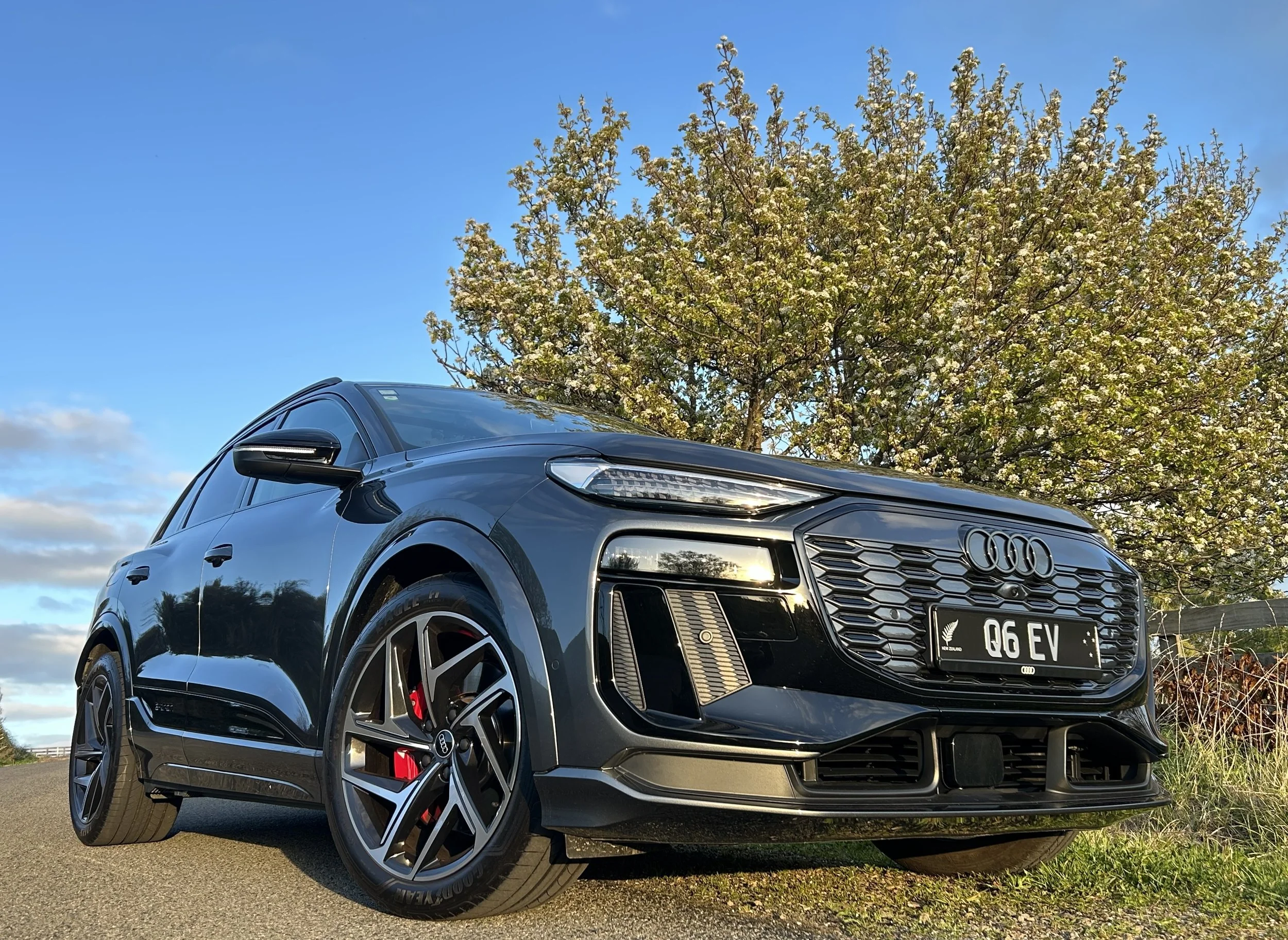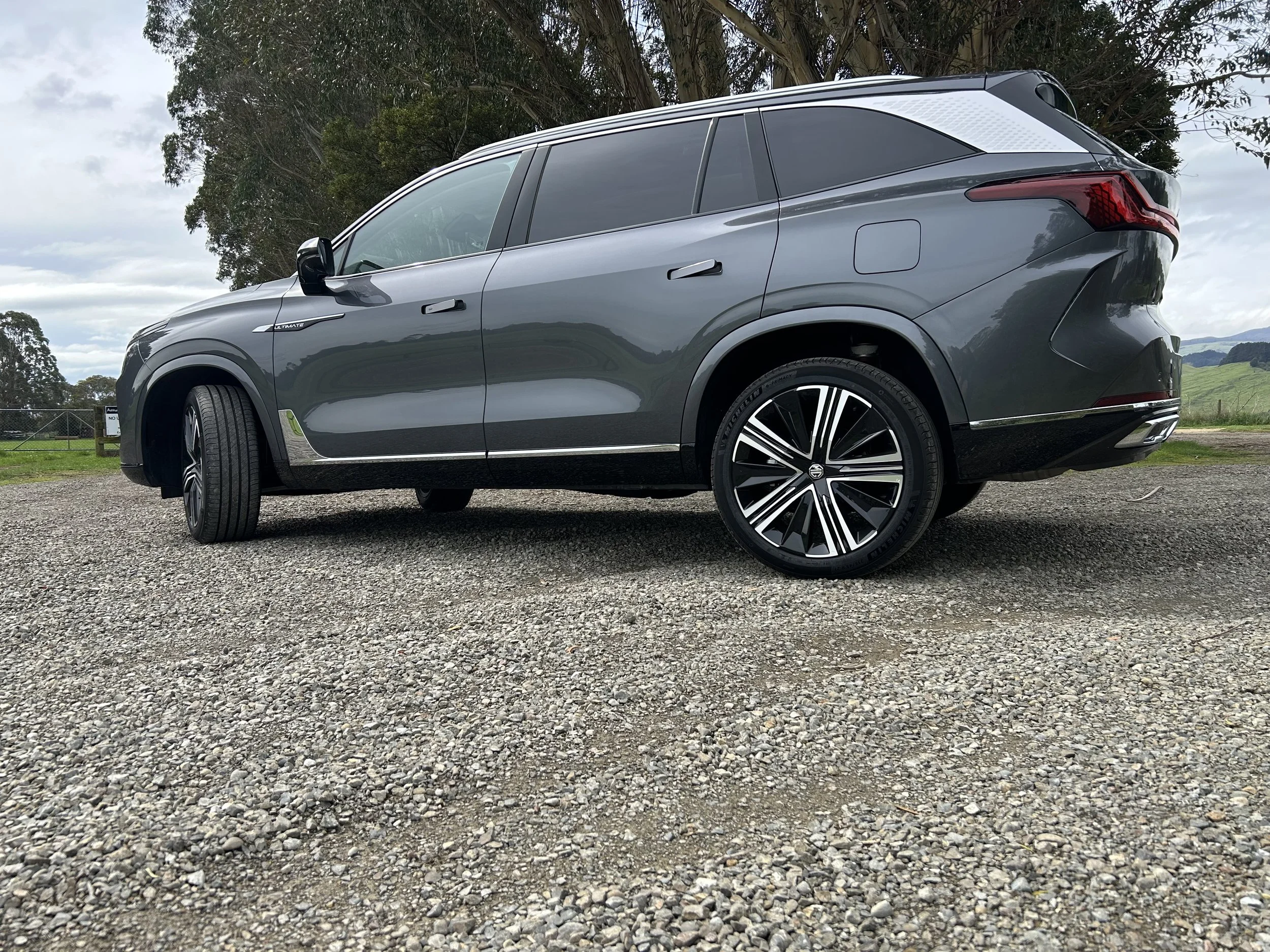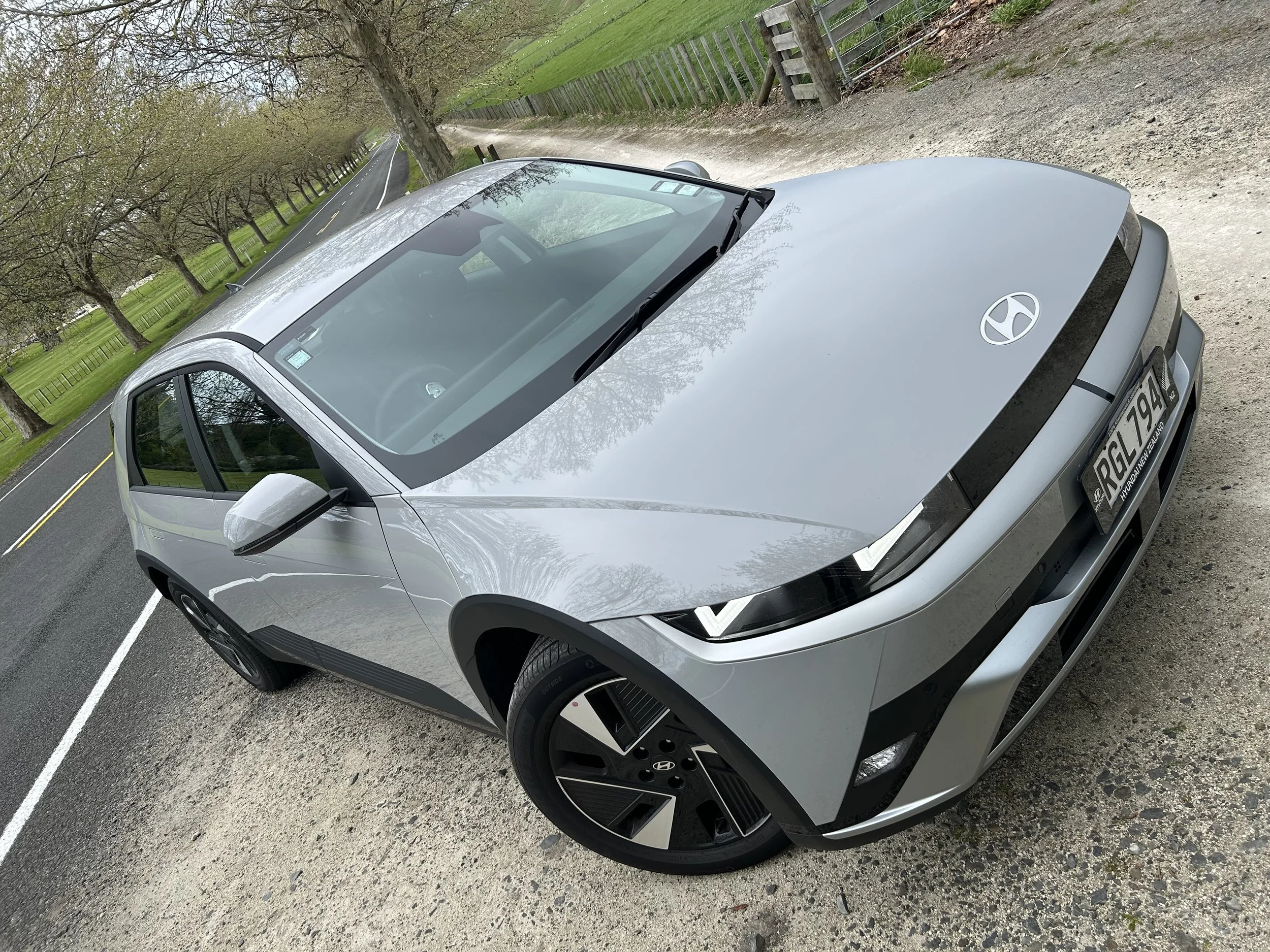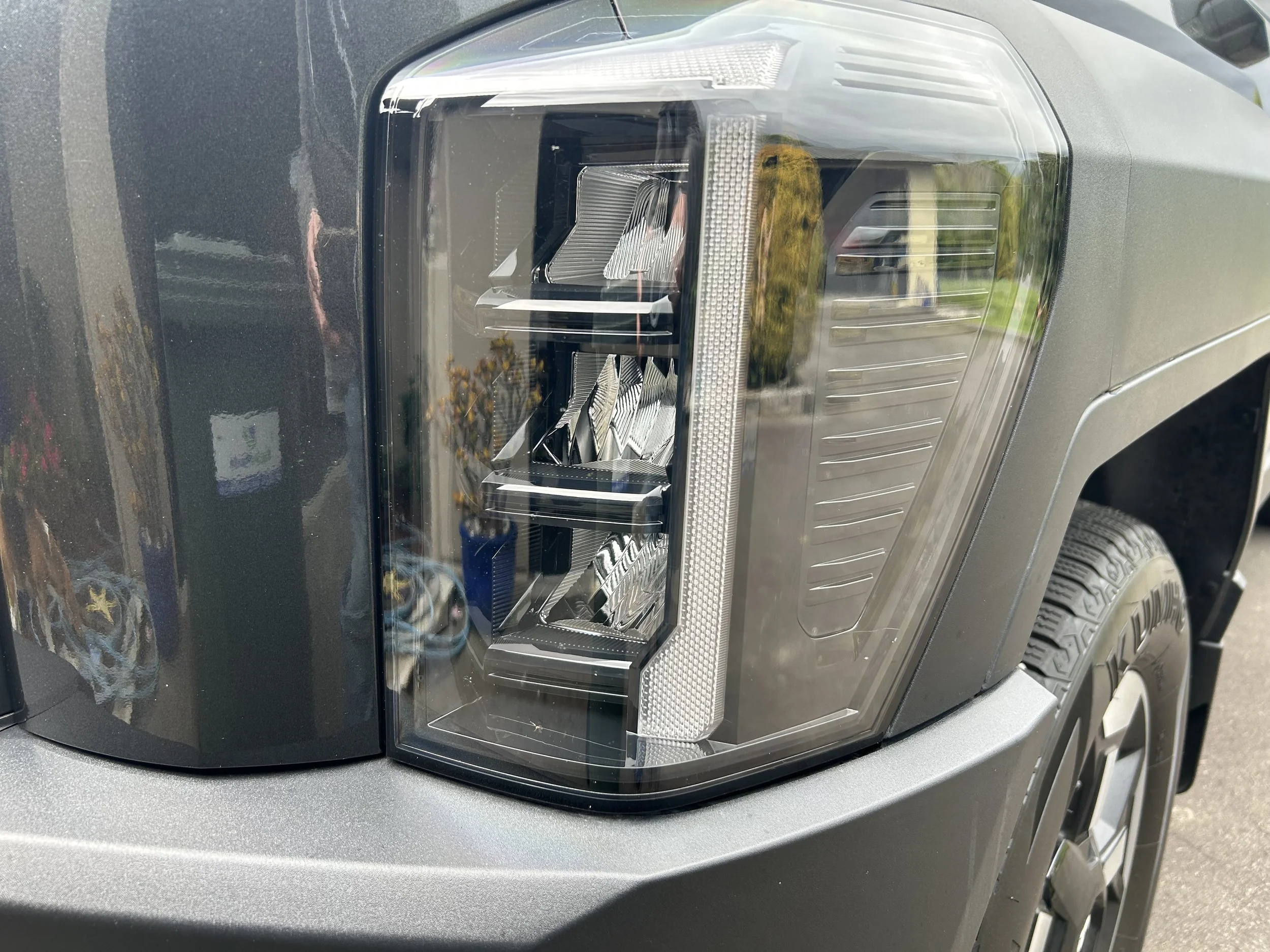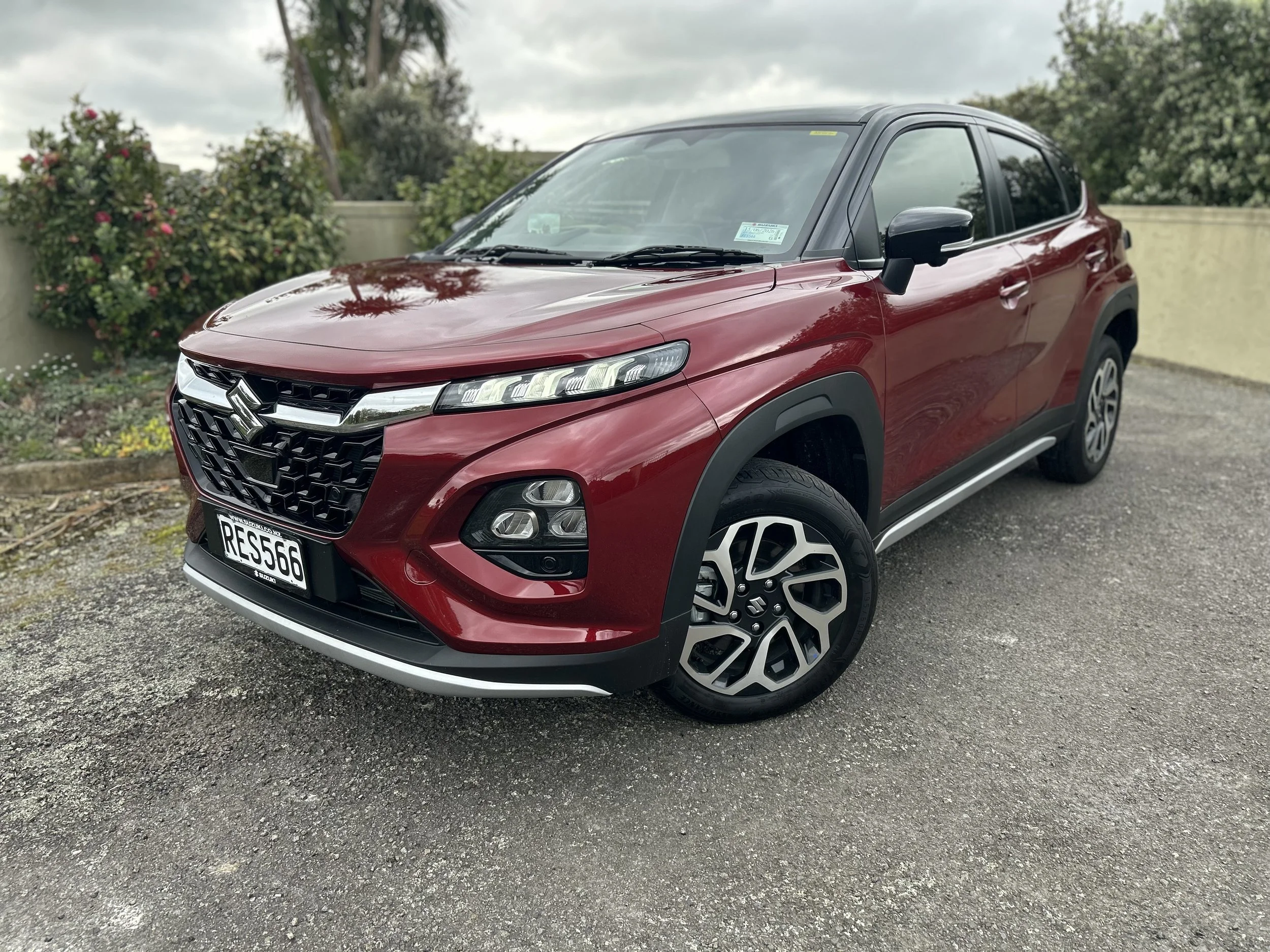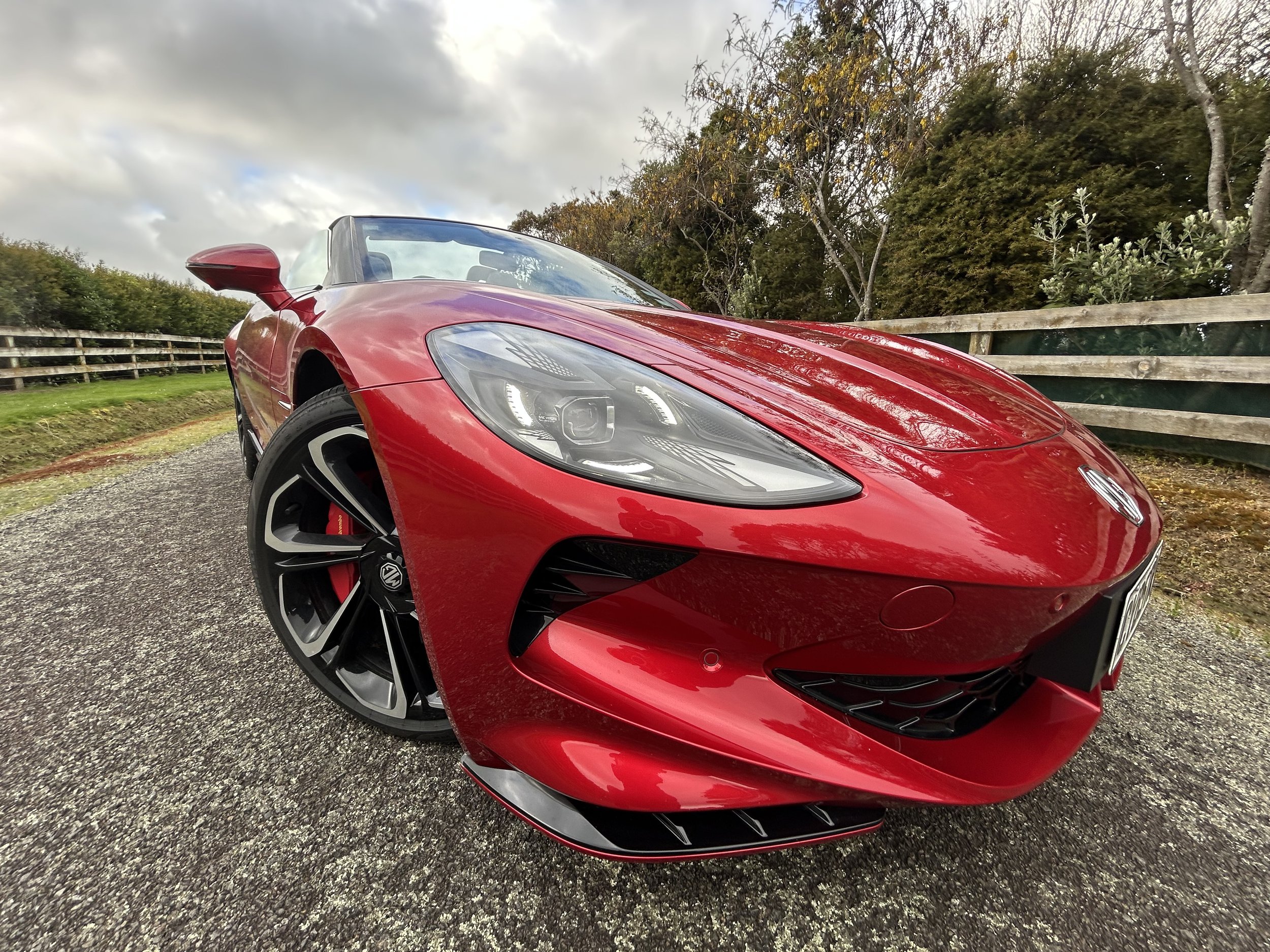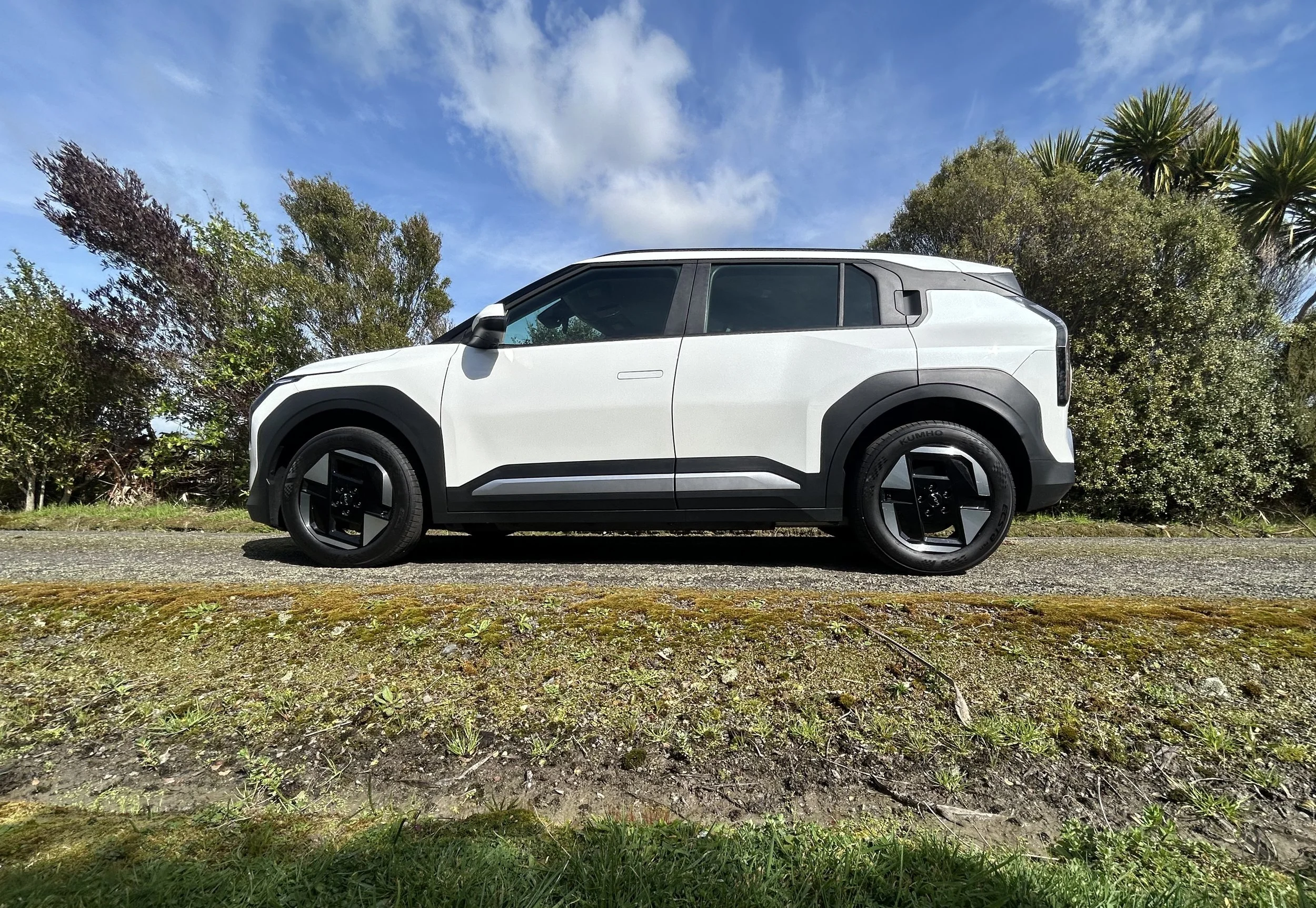Hyundai Tucson 1.6T Hybrid N-Line AWD road test review: Setting up for a shootout
/A compelling new hybrid drivetrain for this solid contender surely raises its chances.
How much: $71,990
Powertrain: 1.6 litre turbocharged four cylinder petrol, 172kW/367Nm, six speed automatic.
How big: 4650mm long; 1865mm wide; 1665mm tall; 2755mm wheelbase.
We like: A better home for clever hybrid powertrain; spacious and comfortable interior; N-Line enhancements.
Not so much: Carries a premium; over-zealous speed warning.
WAS Hyundai’s mindset all into High Noon scenarios when it decided its most important sports utilities demanded names intertwined into the romanticised Wild West period of American history?
Perhaps so. The Tucson and the Santa Fe, after all, have from day dot worked up image as frontier life disruptors; the gun fighters that rode into town intending to re-set the pecking order.
It’s not been that easy; Sheriff Toyota and his deputies RAV4 and Highlander have been tough to put down. But not always.
Previous Santa Fe arguably used to be the strongest challenger; the diesel underpinning the previous range was a high-calibre weapon; the reason why the car topped its category. Regrettably, as much as NZ loved the oiler, Seoul couldn’t sustain it. So it’s been bumped for a 1.6 turbo petrol mild hybrid that, though technically adept, just hasn’t resonated anything as well. Santa Fe today no longer presents as a threat to Highlander.
A 2025 refresh for the Tucson, then, seems well timed. Revisions meted the second-strongest selling model out of the largest of South Korea’s car makers are extensive, one of which is to install the same engine, in the same tune as Santa Fe takes it. But in a smaller, lighter car. That’s got to be good news, surely?
And while Tucson is set to stop short of matching upcoming RAV4’s step up to plug-in hybrid, all logics suggests the mild hybrid Hyundai now has is a smarter market choice anyway. That’s the tech that has driven the current version of Toyota’s car to No.1 and with RAV4 now at a period of changeover, this seems a good time for Tucson to be on the hunt.
One challenge with going Hyundai is that it’s a significant buy-in.
The N-Line Limited all-wheel-drive on test is the most expensive of the latest family. Still $12k cheaper than a Santa Fe, but among the pricier non-European considerations in the category.
While new RAV4 pricing has yet to be explained, the Toyota variant that compares most closely in the outgoing range is cheaper. And there are strong whispers Kia’s own Sportage with the very same power plant as Tucson will also undercut.
Still, in respect to styling and specification, when considered in isolation Hyundai Motor Company’s own product does come in looking pretty good.
Some of its premium reflects the affluent fit out - buy at this level and luxuries extend beyond the usual leather and so on to panoramic sunroof, smart power tailgate, ventilated front seats heated front and outboard rear. Some comes from it adopting the N-Line accessory pack that adds vital visual zing. Perhaps also influencing is that sourcing has changed, to accomodate a local market preference for enhanced roominess.
Tucson has long been built in two wheelbases; a standard and a long; the first aimed at Asia and Australasia, the second primary for Europe.
NZ-market versions of this generation has come from South Korea, where production for domestic and global use is solely in standard wheelbase, which was shorter than the RAV4’s. To achieve the longer wheelbase - which is equivalent to the category-dominating Toyota’s - Hyundai New Zealand is now taking the cars from Nosivice, in the Czech Republic, which is actually HMC’s most modern factory anywhere.
So, even though what we see now is actually a mid-life facelift, given all these developments, it’s clearly also more than that in many ways.
All the same, the extent of change only begins to enforce with high strength after you’ve slipped into the car and started driving it.
The car as we’ve been seeing it for the past couple of years is a striking and modern-looking choice within its category. It has stood the test of time without issue and potentially looks better now than it did at first release. So it’s consequently understandable the designers would be cautious about altering too much.
The biggest single change is to the bumpers. These have been altered to accentuate the car’s width. Those with eye for greater detail will also note that the grille has been very slightly tweaked make it appear more angular. But the headlights and the roofline seem much the same as previously.
As much as Tucson in any format is a striking car, it’s all the better with N-Line, which adds 19-inch wheels in place of the otherwise standard 18s, a sports body kit, adaptive LED headlights (rather than reflector-beam LEDs), 12.3-inch digital instrument cluster and some interior detailing, primarily leather and suede upholstery with red highlights.
While the Tucson’s exterior design may not have altered all that much, the car’s interior has been modified considerably. Almost everything in there forward of the front seats has been completely overhauled for a more uniform and minimalist look, bringing it closer to Hyundai’s Ioniq electric models.
A dominant digital instrument cluster and touchscreen fitted within the same curved housing stretches across about half the dashboard is considerably more modern than the pre-facelift display and a straight lift from the EVs (and Santa Fe).
The screen functionality has a few operability quirks, mainly to to with how you need to swipe in order to reach sub-menus, overall it’s very good.
For one, the graphics are clear and easy to read, with logically laid out menus and sensible icon positions. For another, physical controls still exist for many regularly used features, such as the climate control, and that makes them much easier to use on the move.
What helps there, also, is that Tucson has a little shelf against which you can brace your hand for more accurate screen taps while driving. That’s a highly sensible touch that some other makers just don’t seem to think about.
All in all, as much as the car puts a lot more emphasis on touchscreen technology, Hyundai has by and large effected this in the right way. It’s going to be a positive experience for those who might have some reservations about this kind of integration.
Configuration change now also delivers a digital instrument display directly ahead of the driver which like the touchscreen, isn’t necessarily a be-all for flamboyance but nonetheless puts all the information you need exactly where you need it, in a very logical manner.
The gearshift being a ‘wand’ on the right side of the steering column is also taken from the EVs and, as in those, is a bit fiddly initially, but soon becomes second nature.
The high-end Tucsons have blind-spot monitoring with cameras delivering a view down the side of the car whenever you indicate, with the intention of helping you avoid sideswiping other drivers and protecting cyclists.
That’s only the tip of the driver assist and accident avoidance tech without which no modern car can do without, at least not if their makers want to achieve a top safety score from ANCAP, which Tucson has under its belt.
The speed limit warning tech is still a pain because, as before, not only does it trigger when you’re so much as a hair over a posted limit but also because it sometimes gets confused and shows up speed limits that are utterly divorced from reality.
Disabling this system entirely is possible, but it’s not a one-step opportunity and, in any event, is also a revision that enables purely for the duration of any journey. Turn the ignition off and the car returns to factory setting. But at least in Tucson you can hold down the mute button on the steering wheel to silence the audible chime. That’s a first-time fitment in a Hyundai.
The lane-keeping assistance is also a touch flighty. The cruise control and forward collision alerting tech is thankfully more resolved.
With or without N-Line, Tucson comes with a strong technology appeal of wireless/wired Apple CarPlay and Android Auto - make sure you have mapping on your phone, as embedded satellite navigation isn’t provisioned - dual-zone climate control, wireless phone charging, keyless entry and start, six speakers, and front and rear parking sensors.
Amenities include two USB-C ports, one 12-volt socket and sunvisors with an extending panel to shade the side of your head.
What also will appeal is the amount of space available in the cabin. There is plenty of storage, with an open centre area for larger items, big centre console and glovebox compartments, and two cupholders. Watch what you put on the shelf on the dash; it’s not rubberised so items will fly off under brisk acceleration.
Tucson has never been cramped, and those in front have always had plenty of space and seat adjustment. But just that little bit for the rear now will not go unnoticed, nor unappreciated. Once again, it will carry four adults with ease.
While the rear seats don’t slide like some rivals, they do recline as part of their 60:40 split-folding mechanism for expanding the boot, whose space is otherwise rated at 582 litres. One nice touch there is the two-position boot floor to eliminate a big load lip. LED lights, a 12-volt socket, bag hooks, tie-down points and pockets on the side are useful elements. The hybrid has a space-saver rather than a full-sized spare wheel, but it’s better than a puncture repair kit.
Internationally, Tucson continues in petrol and diesel, the petrol editions offering the mid-range hybrid (badged HEV) that is here and, beyond that, a plug-in hybrid (PHEV) that isn’t currently a consideration, but perhaps might be if Toyota can make it work for RAV4.
Both the hybrid and the plug-in hybrid are based around the same 1.6-litre turbocharged petrol engine, but they have different electric motors and batteries that give them quite different power outputs and characteristics.
The PHEV has a more powerful motor, grunter combined power and can offer actual only-electric driving; the hybrid is more bout thrift than thrust and the only time the electric drive enables on its own is at very low speed, normally when stepping off for the first few metres - and that’s just when the engine has warmed up, cold starts prioritise the ICE - and when reversing.
Given how the market is right now, the hybrid seems quite enough and it definitely seems to do the job for fuel burn.
Hyundai’s mixed condition consumption claim of of 5.9 litres per 100 kilometres proved a fairly accurate assessment on It seems to have capacity to be very lean. The computer often showing instant returns with the sub-5L zone when holding steady cruise at open road pace suggests it has the measure of the current RAV4. There’s also saving in that this engine will run on 91-octane regular unleaded. Many petrol-electrics prefer premium.
As in the Santa Fe, it is a nice drivetrain to sit behind. There’s good off-the-line punch and it holds it own at open road speed, to point that, as in the larger choice, you might be left thinking this engine has a larger capacity than it actually has.
The difference between the two sizes of Hyundai shows when you hit significant inclines or start punting along secondary roads. Pace doesn’t waver anything like as noticeably here with Tucson and, so, in overall performance, it avoids the bugbear with Santa Fe of sometimes feeling only just capable enough.
Refinement seems to improve in the more compact setting. You are less likely to hear the engine work and it enjoys a happier time with the six-speed transmission. As in the large car, though, you find that you might only want to be sparing with Eco mode; it could be useful tank is near empty and you want to eke the most from those precious last few litres. Otherwise, though, this is a more reactive vehicle in Normal or Sport.
In general operability it is a typical mainstream Hyundai; a very relaxing and refined car to drive. However, anyone concluding from having the N-Line enhancement that they’ve bought into a sportier driving car is going to find disappointment.
The chassis is decent; there isn’t too much lean in the bends and it holds its line pretty well, and the suspension tune is excellent, all in all; bump suppression is very good.
But the steering is light and numb, and while not lacking wholly for precision, there’s not a lot of sensory engagement. Simply, those searching for pure driver engagement will be left wanting.
If there’s one tangible weakness, it’s possibly the factory’s preference for Nexen rubber. This must be surely for reasons of easy availability and cost. They’re not a hopeless choice, but I found that the grip afforded on seal in wet, cold conditions was less assuring than how it coped on dry asphalt. There is also a lot of tyre roar on coarse chip.
All in all, though, there are factors that leave impression it’s a car best driven in a restrained way; dial back and it feels comfortable and refined.
Cars of this ilk always raise question about their actual suitability for driving beyond gravel. That it even comes with hill descent control to prevent the car running away from you on slippery slopes is a positive for those thinking about escaping into the green zone. There are also off-road driving modes to manage the car’s power delivery in a way that suits the conditions. You shouldn’t consider it a full-out four-by-four, but I’d say it could probably withstand some light off-roading, potentially more than any customer is likely to throw at it.
Going to a longer wheelbase doesn’t seem likely to alter the excellent crash test rating won by this car in its initial representation. Bodywork has only changed slightly compared with the outgoing model and the basic structure is the same.

